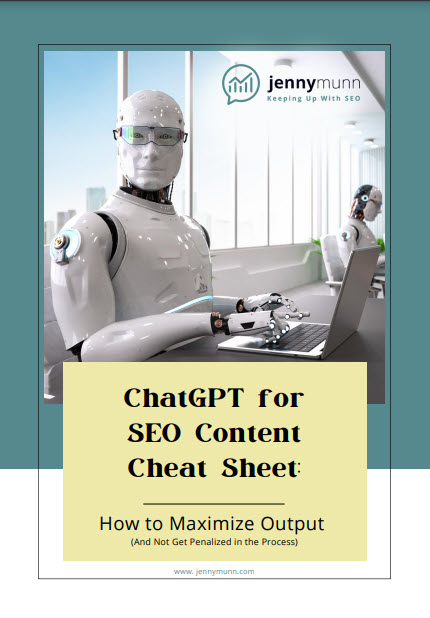
The definition of ongoing SEO maintenance, according to Google, is: “the on-going process of improving your rankings and building your site.”
Sounds like a good thing, right? Well unfortunately, many of the SEO “maintenance” plans I see fail to get results.
There are many ongoing SEO tasks, but they each carry different value, weight, and labor intensity.
In fact, I wrote about it here and this continues to be one of my highest ranking blog posts for several keywords, including “SEO maintenance” and “ongoing SEO.” I hope these keywords and searches reflect that businesses are out there doing their homework before signing contracts. I think after getting burned for so long in the pre-Penguin and pre-Panda SEO era, and perhaps even today continuing to shell out hundreds/thousands of dollars a month to keep up with competition and not getting anywhere, businesses have had enough. In fact, out of over 300 SMBs, did you know less than 20% trust their SEO or PPC firms according to this Bing survey? Not good.
I wanted to freshen up this topic, and provide a good starter discussion I hope both agencies and businesses will jump into.
First, here are 4 things you need to know before you read on:
- I’m not always one to point fingers at the service provider as the reason maintenance isn’t working.SEO has grown to require such a large scope of activities, often the provider or agency’s clients’ budgets really are too small to do more than the basics. Maybe the providers get brushed off when they try to get source material and expertise in house. Or, the business has too high of expectations for SEO maintenance and doesn’t fully understand SEO is reliant on many other activities to get success. Ideally, to achieve SEO success, you have a good, trusting partnership and ongoing communication between the client and service provider.
- Let’s get one thing straight: SEO “maintenance” must come on the heels of a bang-up job of one-time passive SEO work. Meaning: technical, meta data (title tag and meta descriptions), site structure, keywords, links, 1-time local SEO NAP implementation (name address phone) if needed, on-page optimization and finally content, must be evaluated and optimized as much as possible before maintenance sets in. You can’t maintain if you haven’t properly built a foundation to grow from.
- A high-level plan must be in place.Of course you can start anywhere with SEO and cobble it together, but at some point a strategic, cohesive strategy must be properly established so you’re aligned with business objectives and you know what you’re working towards.
- This article is intended for bigger businesses and here’s why: for most solopreneurs or small business owners, shelling out a couple hundred dollars may be all you can do, and that’s commendable. However, the tips below in this article may be out of reach for you and are intended for businesses that are investing regularly in SEO and consistently participate in other digital and offline marketing channels.
Let’s start with the most known form of “achieving SEO” that brings moderate SEO results: Just write good content. (grrrr – this is a hot button with me and a huge misconception out there.)
Moderate SEO Tasks – Blogging, Social, Local
Blogging and being active on social are two of the most common ways most businesses grow their SEO results.
I consider these “moderate” because while these used to be all it took for success, this is now the entry point. You need an active, engaging presence consistently across both mediums. And this just takes time in order to find your voice, write content that will attract (and convert) the right traffic, use the right keywords, and experiment.
For social, showing up and posting regularly is now “social media 101.” Then you begin attracting and becoming part of a community, and amplifying your content to get it more eyeballs, and – fingers crossed – more shares and ultimately links.
If one-time passive SEO only got you so far, low to moderate “maintenance” plans are not going to do enough to continue pushing you up the rankings in a competitive market in a timely manner. Over a long period, with good quality work, you’ll move up, but it will take several months or years and you have to be in it to win it.
If this can be outsourced effectively (meaning you have a really good blogger who understands your industry and actually has something of value to say) that’s wonderful, but unfortunately this is not the norm. Mostly what I see with outsourced blogging is very generic, blah copy that’s not going to really move the needle for you. If you can find an in-house subject matter expert who is close to the material AND to your customer’s needs, then your outsourced SEO provider can take it and leverage it but again, that process must be clearly defined and consistently executed on.
The other con about outsourcing for the business: this is expensive to completely outsource.
The downside for agencies in providing this service that I also see happen a lot: it’s reliant on source material and feedback from the internal people in the business, and that can be really tough. If they’ve outsourced it in the first place they most likely have a lot on their plate and little tolerance for providing constant feedback and communication.
Oh, and let me add one more moderate ongoing SEO maintenance activity for local businesses: cleaning up and adding citations to local directories. This is important, but alone, it will take a lot of time for it to gain momentum along with the two activities mentioned above.
The Best Ongoing SEO Tasks that Move the Needle
At least once a quarter, if not every other month, you have to have a “fireworks” activity. Meaning, you have to do something pretty purposeful to—in the words of the super-savvy Lynn Terry—make news or make friends.
Or put another way – you have to create some hoopla around your business and products or services. So what are the best ongoing SEO tasks? Here are 6 ideas:
- Getting Actionable Insights from Analytics – give credit where credit is due. Getting SEO results takes a team. You have to recognize and cheer on the people who make success work in order to keep them invested and show them how their contributions are contributing to the bigger picture. Not to mention giving them accolades in front of the team and their leadership. I recently had the pleasure of praising two team members for 1) seizing an opportunity to “news-jack” by writing a blog post on Tim Tebow laws and homeschooling. This has generated rankings for multiple keywords, social signals and links and 2) Writing such unique, valuable content across a series of pages she got one of the pages to rank in Google’s Answer Box. Recognizing these efforts is so critical.
- Tackling low-hanging fruit– knowing what are your core keywords, looking out for long-tail keywords that support and complement them, tweaking title tags and meta descriptions to improve conversions, and looking for ways to boost a result from Page 2 to Page 1 are worthy activities.
- Speeding up the site– I think there has only been one audit in the past 6 months where I’ve told them their site speed looks good. Every other site audit I’ve done involves a moderate to critical recommendation to speed up yo’ site. You can analyze with either Google’s Page Speed Insights or look within your Google Analytics report.
- Prune the site– this is only for my larger sites who have thousands of pages, but I’ve explored and recommended this for several clients lately. They have fiercer competition, quality and uniqueness signals are essential, and the time has been right. Here is a great resource for looking into this –https://moz.com/blog/pruning-your-ecommerce-site.
- Make news– are you sponsoring an event? Attending a tradeshow or conference? Launching a product or new service? Is there a trend or subject matter theme you can create a package of content around: webinar, white paper, video, blog series?
- A quality backlink campaign– call this what you want – a nurture campaign, an ego-bait campaign, a PR campaign, a content amplification and outreach initiative – the goal is to get more backlinks from influencers and start developing relationships that you can continue to nurture. One of my clients, through internal efforts and investing outreach/linkbuilding/nurturing got a link from Forbes, which rippled out to include more links from quality sites who picked up and published the Forbes article with the backlink.
As you can see, these tasks require more effort and expertise, but if you can justify the investment with better traffic, more conversions and more clients, it’s worth the increased maintenance cost, even if it’s done once a year.
Basic SEO Maintenance Tasks
Now before I hate too much on SEO providers who offer ongoing SEO maintenance, let me say that these ARE tasks that are important. They’re maintenance in the true sense of the word. NOT needle-movers. These tasks involve:
- Redirecting 404s
- Sending automated PDF analytic reports (without actionable insights)
- Reporting and updating on SEO changes and trends
- A host of other tactics detailed here in my original “What the Heck is SEO Maintenance” blog post
At the end of the day, your SEO requires a mix of passive (one-time) and active (maintenance) activities. Common sense, an understanding of marketing fundamentals, and a heaping of creativity and personality, is your ticket to make it all come together and work.
Your Thoughts?
What ongoing SEO activities do you find to be the most effective? Are there any practices that you think are outdated or ineffective and should be abandoned? Chime in with your comments below!
Jenny Munn
Latest posts by Jenny Munn (see all)
- Four 2024 SEO Planning Tips for World Domination - November 16, 2023
- SEO Planning Tip: Why You Need a CYA Clause - November 3, 2023
- How Long Does SEO Take to Show Results? (Updated for 2023) - August 9, 2023


